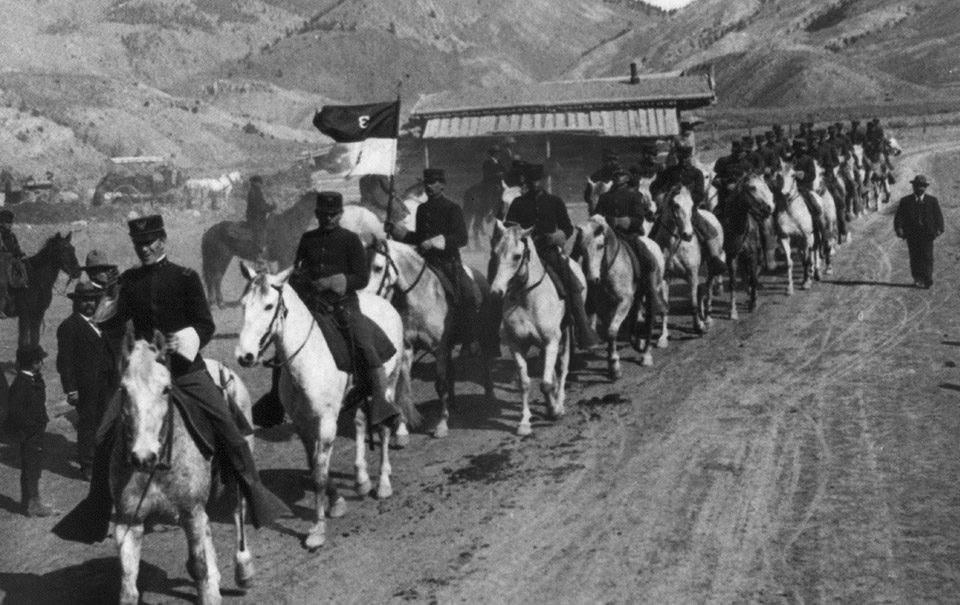The buildings of Fort Yellowstone are a testament to the long history of our first national park and of the important role the Army played in preserving it for the future. They remind us that the resources we find within Yellowstone’s boundaries are not only natural ones, but cultural as well. Our interactions with this wilderness continue to shape our idea of what a national park should be, just as they did during the days of Fort Yellowstone.

Ten cavalry units served at Fort Yellowstone during the 30 years—troops from the First, Third, Fourth, Fifth, Sixth, Seventh, Eighth, Eleventh, and Thirteenth cavalries, and an experimental unit of men selected for their particular skills in mountain living.
In 1916 when Congress created the National Park Service, the Army turned Fort Yellowstone over to the new agency. Local resistance made this transition difficult, and the Army returned in 1917. The park was fully under National Park Service control in 1918, and the Army departed. The fort has served the park well, both as administrative headquarters and as a constant reminder of the debt the nation owes the officers and enlisted men of the United States Army for protecting and preserving Yellowstone National Park for future generations.